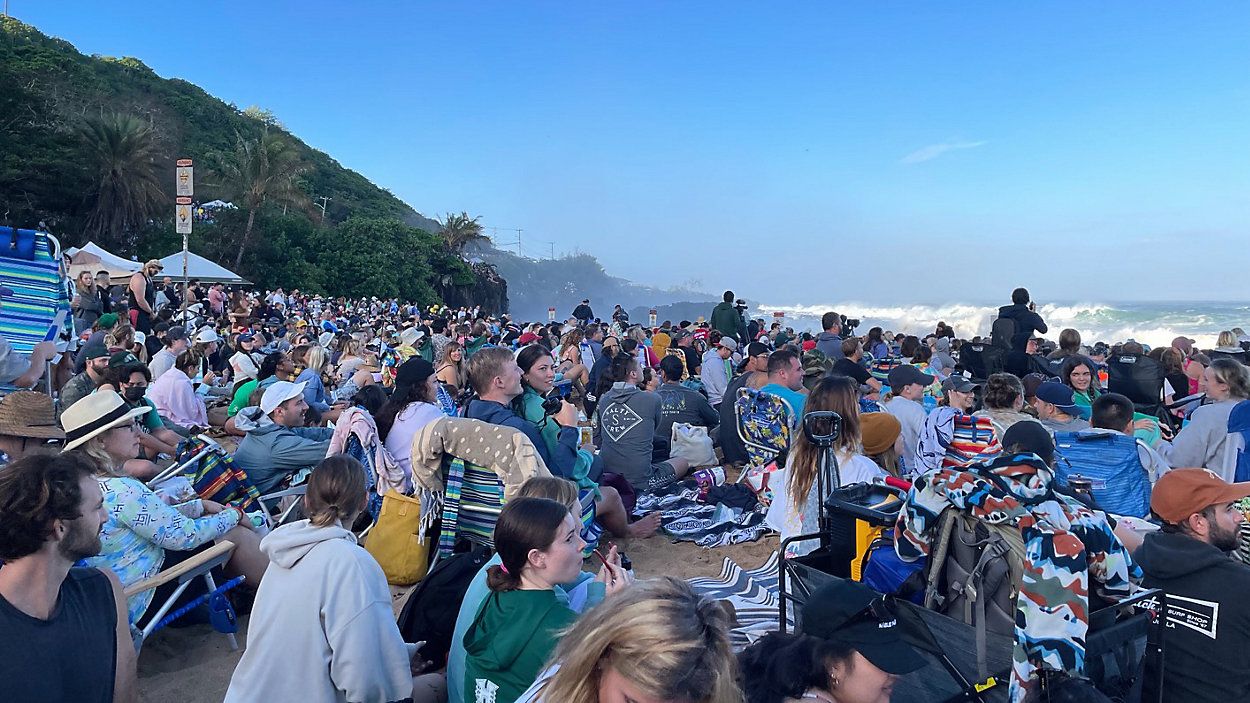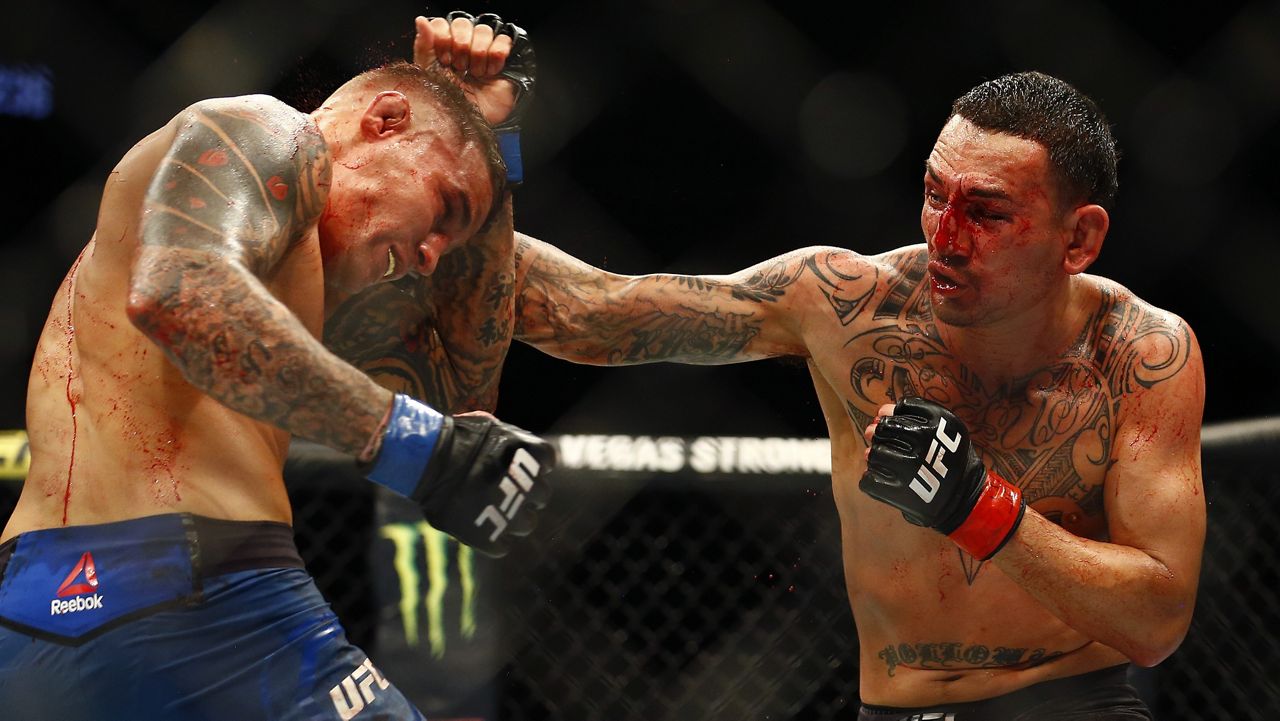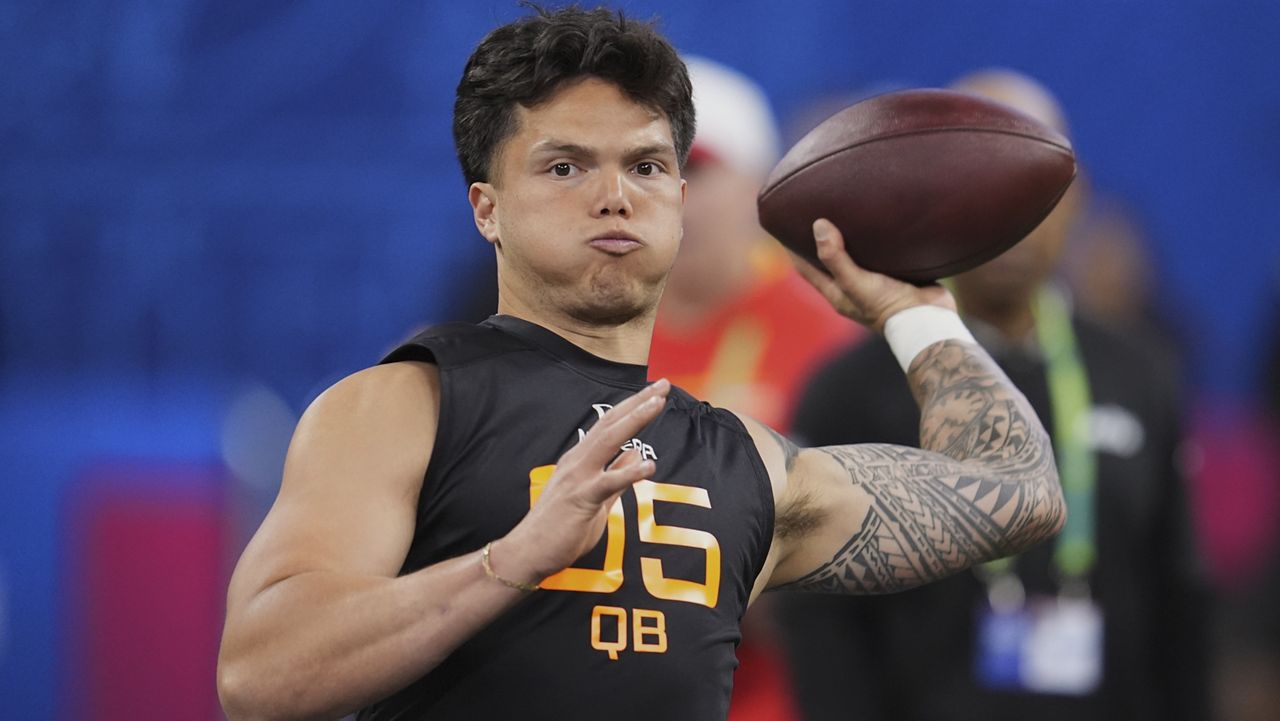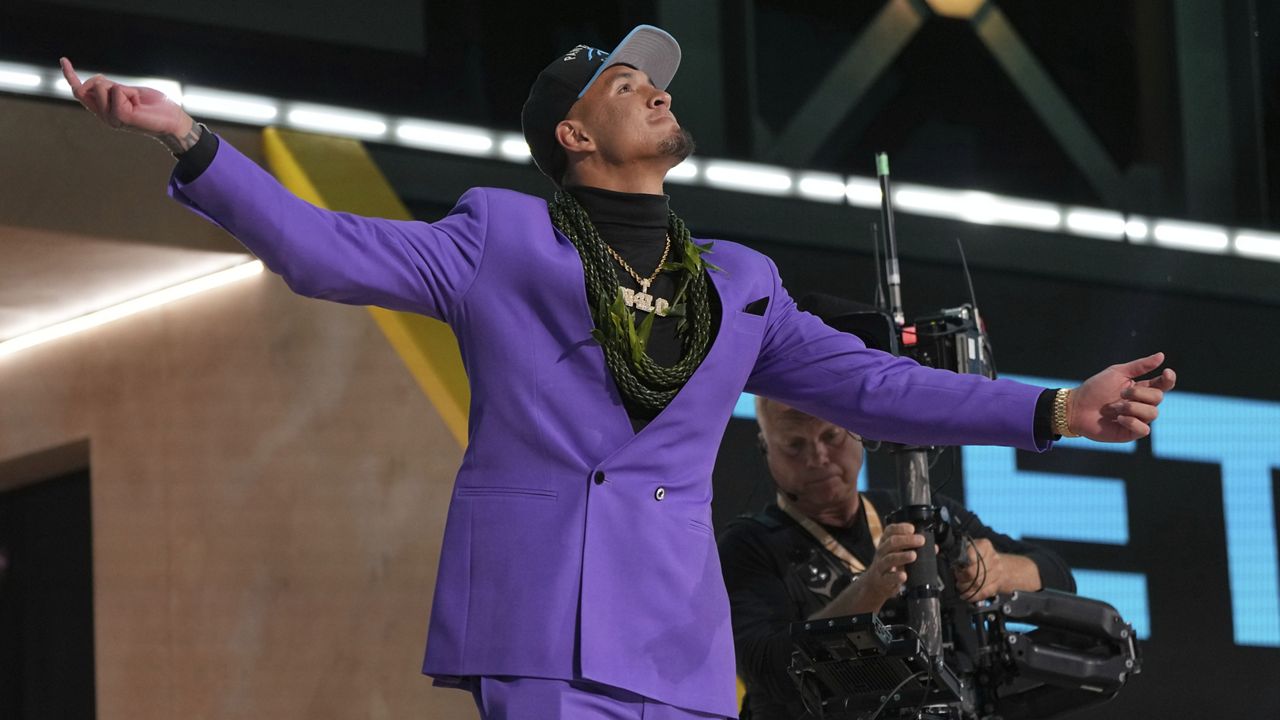Surf’s up! In Hawaii, surfing is an integral part of life. Spectrum News Hawaii covered many of the major events in the local surf scene and profiled up-and-coming surfers. With the year coming to a close, we reflected on some of the most important surf stories. Read the full articles by clicking on the links.
1. Wild and dangerous scene at the Eddie as spectators cram into Waimea Bay
Before the Eddie Aikau Invitational started at 8 a.m. on Sunday morning, tens of thousands of people were making the pilgrimage — by walking, biking and driving — on Kamehameha Highway to head to the iconic event at Waimea Bay. Along the way, budding entrepreneurs were selling cold drinks, musubi and papale (crownless woven hats).
It was the first Eddie held since 2016, as organizers canceled the event during the 2020-2021 season due to COVID-19 and because the conditions must be perfect for the big wave surf contest to be called on. Wave heights had to be at least 20 feet on the Hawaiian scale, which measures waves from the back, between Dec. 14, 2022, through March 23, 2023, for the contest to be a “go” this year.
Luke Shepardson, a Honolulu Ocean Safety lifeguard, won The Eddie Aikau Big Wave Invitational, an event named for a legendary local lifeguard, at Waimea Bay.
The winter swell started crashing against the North Shore’s coastline in the middle of the night, and as the day went on, the waves continued to grow larger. Spectators covered every inch of sand, spilling out onto the road, climbing into the cliffs behind the bay and setting up hammocks in trees to get a look at some of the best surfers in the world charging the massive 25- to 30-foot waves. Only 40 big wave surfers were invited to join this year’s competition.
Along with being special because the event is so rarely held — this was only the 10th time the Eddie had been called on since starting in 1984 — it was a monumental moment for equal opportunities in surfing, as it was the first contest where women were invited. Six female surfers were part of the lineup.
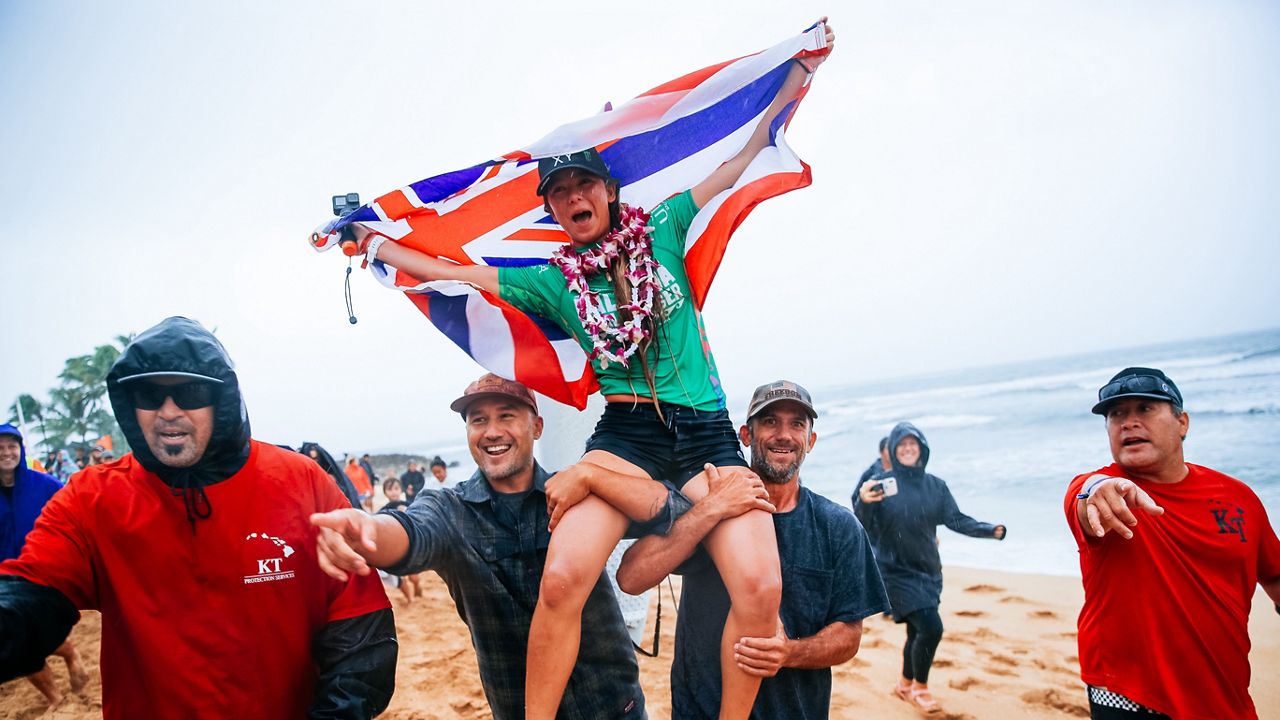
2. 17-year-old Bettylou Sakura Johnson says it's an honor to be a woman surfer
Bettylou Sakura Johnson, 17, grew up in Haleiwa on Oahu, where she learned to surf when she was 6. She is now a rising star in the surf world, joining the 2023 Championship Tour.
She told Spectrum News Hawaii that her parents loved surfing and always wanted her to love it, too.
“My parents would always have me in the ocean,” said Johnson.
However, before she started surfing, she was a gymnast and dirt-bike rider.
“Those were my two main sports and then surfing … unfolded when I got older, around 7, 8 and 9. That's when I really started to surf more,” said Johnson.
Until she aged out at 12, she competed in the Menehune Surf Contest at her home break, winning multiple first-place trophies.
In 2019, Johnson traveled for the first time for a surf contest, heading to Lower Trestles, California, to compete in the USA Surfing Championship. She clinched first place in the U-14 girls division. It was then that she decided she wanted to be a professional surfer.
Fast forward to 2021, and Johnson won the Haleiwa Challenger when she was only 16, beating out five-time World Champion and Olympic gold medalist Carissa Moore.
“I felt really grateful and happy because I felt like I won for my whole community,” said Johnson. “It was pouring rain that day, and everyone was actually still there to cheer me on. I think that's what made it very special and memorable. I’ll remember it for the rest of my life.”
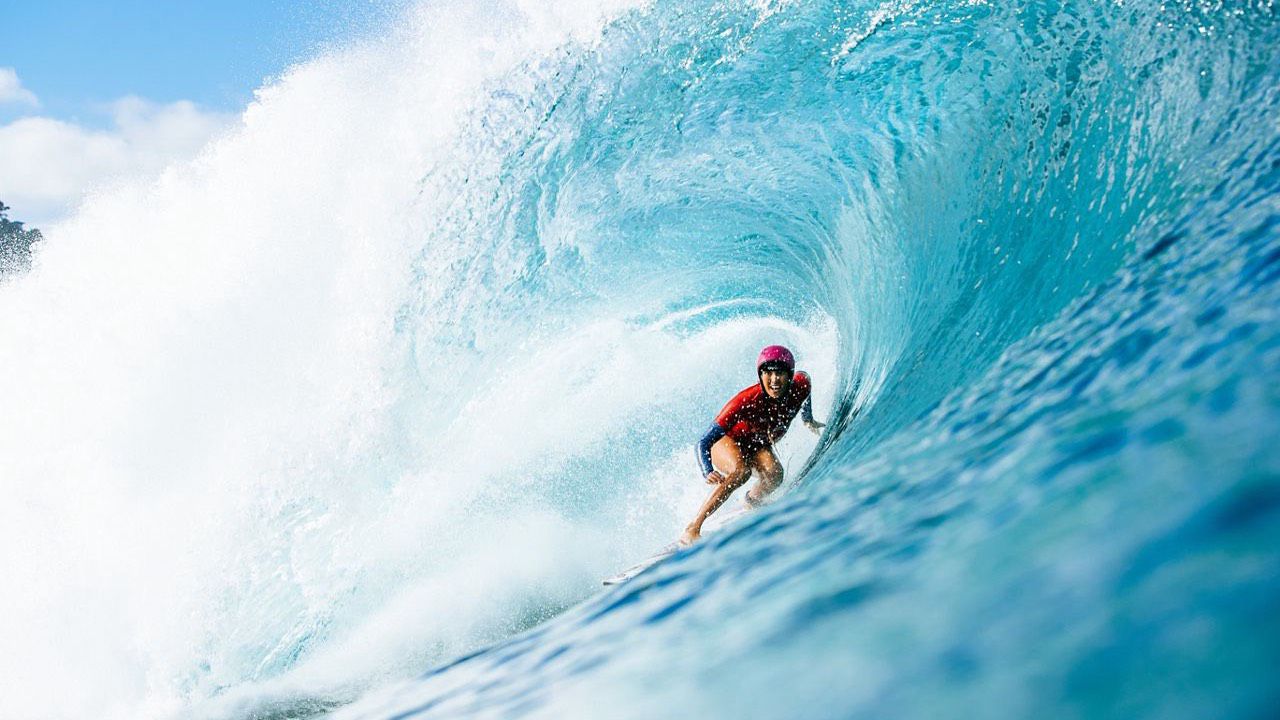
3. World Surf League’s Championship Tour will begin with Billabong Pro Pipeline
The World Surf League’s Championship Tour will begin at the Billabong Pro Pipeline, with a competition window from Jan. 29 to Feb. 10, 2023.
Pipeline is an iconic wave located in the middle of the “Seven-Mile Miracle” on Oahu’s North Shore. It is known for its powerful barrels that break over a shallow reef. Last year, the first-ever full-length women’s Championship Tour event was held at Pipeline.
The 2023 Championship Tour will include 10 events in seven countries, starting with the Billabong Pro Pipeline. The first two events are in Hawaii, with the second being the Hurley Pro Sunset Beach, which has a competition window from Feb. 12 to 23. A total of 36 men and 18 women will compete in the first five competitions. After the fifth event at Margaret River Pro, the mid-season cut will reduce the competitions to 24 men and 12 women.
After the Championship Tour’s 10 events are completed, the top 5 men and top 5 women surfers will compete for the World Titles at the 2023 Rip Curl WSL Finals, which will be held in Lower Trestles in San Clemente, Calif.
The 2023 Championship Tour will help determine who qualifies for the Paris 2024 Olympic games. The rankings at the end of 10 events will determine 18 of the 48 spots at the Olympics.
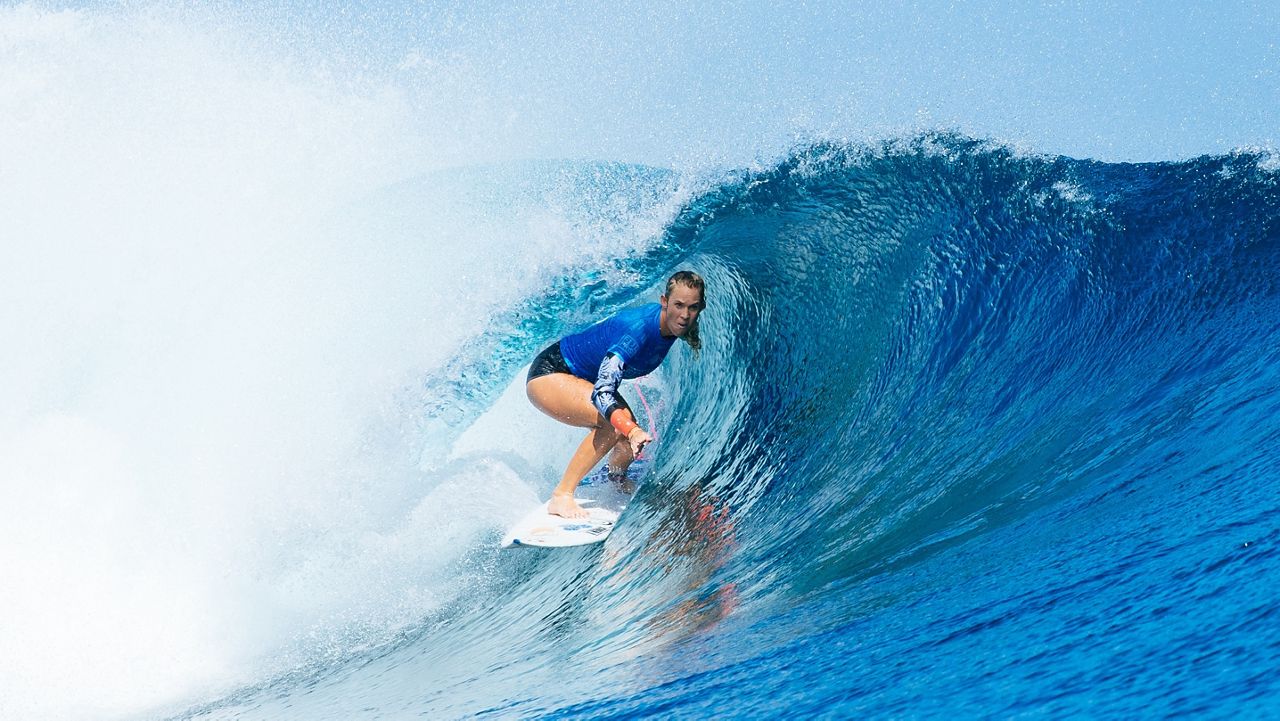
Bethany Hamilton said in a social media post she would not compete in future World Surf League events if they keep a new policy that allows transgender athletes to compete in the women’s division.
Hamilton, who became famous when she was attacked by a shark at age 13 and despite losing an arm continued to surf competitively, posted a video to Instagram criticizing the World Surf League’s announcement last week that it would use the policy for including transgender athletes that was created by the International Surfing Association. The ISA’s policy requires transgender women to maintain a testosterone level less than 5 nanomoles/liter continuously for at least 12 months before competing in the women’s division.
“I want to address the news that the World Surf League has officially made the rule that male-bodied individuals known as transgender athletes can officially compete in the women's division,” said Hamilton. “This concerns me as a professional athlete that has been competing in the World Surf League events for the past 15-plus years, and I feel that I must speak up and stand up for those in position that may feel that they cannot say something about this.”
In her social media post, the 32-year-old surfer asked a series of questions about the rule changes, including ones that find fault with the use of hormone levels to determine eligibility.
“Is a hormone level an honest and accurate depiction that someone indeed is a male or female?” said Hamilton. “How did whoever decided these hormone rules come to the conclusion that 12 months of testing testosterone make it a fair and legal switch?”
Hamilton said a separate division should be created for transgender athletes.
She ended her video by saying she would boycott the World Surf League.
Michelle Broder Van Dyke covers the Hawaiian Islands for Spectrum News Hawaii. Email her at michelle.brodervandyke@charter.com.





